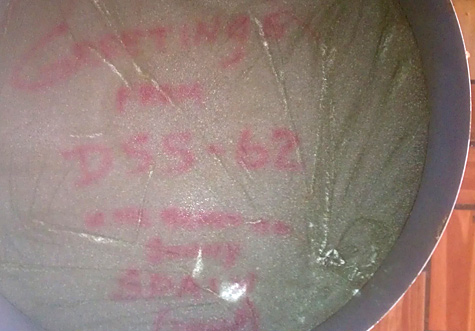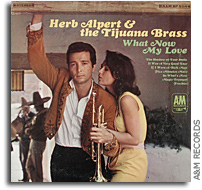 Volunteers Needed to Preserve Astronomical History and Promote Discovery
Volunteers Needed to Preserve Astronomical History and Promote Discovery
“Digitizing the ~500,000 glass plate images covering the full sky will foster new scientific discoveries for the currently ‘hot’ field of studying variability of astronomical objects, or time domain astronomy, as we bring to light these long-hidden archives,” says Harvard professor Josh Grindlay, the leader of the Digital Access to a Sky Century at Harvard (DASCH) project. The telescope logbooks record vital information associated with a 100-year-long effort to record images of the sky. By transcribing logbook text to put those historical observations in context, volunteers can help to unlock hidden discoveries.”
Extraterrestrial: The Lunar Orbiter Image Recovery Project
 2-Minute Film Festival goes to the moon, Pittsburgh Post Gazette
2-Minute Film Festival goes to the moon, Pittsburgh Post Gazette
The lunar orbiter project is made up of “a group of dedicated space industry professionals who have worked for several years to digitally recover the first photographs of the moon and the first photographs of Earth taken from the moon,” Ms. Heffley said. Their work site is an abandoned McDonald’s on a NASA naval air station in Mountain View, Calif. When the Carnegie Museum film crew arrived in March, the team of techno-archaeologists had just digitized the final of the more than 1,400 magnetic tapes.
Extraterrestrial: The Lunar Orbiter Image Recovery Project and The 2-Minute Film Festival
Join us for the world premiere of Extraterrestrial, Part 3 of The Invisible Photograph. Begin the evening with a look into the Lunar Orbiter Image Recovery Project. See how a team of techno-archaeologists digitally recovered the first photographs of the moon, taken by unmanned space probes and used to determine the landing sites for the Apollo missions of the 1960s and the 1970s. Then join us in the Sculpture Court for a screening of finalists from this year’s 2-Minute Film Festival, showcasing films that explore the concept of outer space–in two minutes or less. Picnic food and bar open in the Sculpture Court beginning at 7:30 p.m.
The Invisible Photograph, a production of the Hillman Photography Initiative, is a five-part documentary series investigating the expansive realm of photographic production, distribution, and consumption by way of the hidden side of photography.
8:15-9 p.m.- Screening of Extraterrestrial with Keith Cowing, co-lead of the Lunar Orbiter Image Recovery Project and Divya Rao Heffley, Program Manager of the Hillman Photography Initiative.
9:15-11 p.m.- 2-Minute Film Festival, back for the 4th time!
$10; includes one drink ticket!
Culture Club is sponsored by: Great Lakes Brewing Company, Macy’s, and Bill Few Associates
LOIRP Imagery Featured in “Desert Moon”
Editor’s note: “Desert Moon”, by Jason Davis, premieres June 28, 2014 at the Flandrau Science Center and Planetarium in Tucson. The “Earthrise” imagery retrieved by the LOIRP is featured in the final film. We hope to have a link to an online version at some point soon.
Trailer Note:
In 1961, President John F. Kennedy boldly declared that Americans would walk on the moon before the end of the decade. But at the time, scientists weren’t even sure whether the moon’s surface was solid, or just a thick layer of dust.
At the University of Arizona, an astronomer named Gerard Kuiper established one of the world’s first laboratories dedicated solely to lunar and planetary science. His team built telescopes in the mountains above Tucson to create detailed photographic maps of the lunar surface that would help NASA land a man on the moon. Kuiper also became the principal scientist for the Ranger program, an effort to send America’s first spacecraft to the moon. Ranger spacecraft intentionally crash-landed on the lunar surface, sending back high-resolution photos during their approach.
Desert Moon follows the origins of the University of Arizona’s Lunar and Planetary Laboratory, and follows the effort to map and understand the moon prior to Neil Armstrong’s famous first step in 1969.
The documentary film features interviews with scientists who worked with Kuiper and helped kick-start the field of planetary science. Desert Moon debuts at Tucson’s Flandrau Science Center in Spring 2014.
Carnegie Museum of Art LOIRP Documentary Premiere
.jpg)
2-Minute Film Festival, Carnegie Museum of Art
Join us under the stars as we reveal this year’s finalists-and give you the chance to vote for your favorite! Each year we pick a unique theme and ask filmmakers to submit their finest–and shortest–films to our 2-Minute Film Festival. To celebrate the interstellar premiere of Extraterrestrial: The Lunar Orbiter Image Recovery Project, part of the Hillman Photography Initiative’s Invisible Photograph documentary series, this year’s filmmakers explored the concept of outer space. With so much room for interpretation, we received a wide array of stellar entries from across the country and around the globe, and we can’t wait to share them with you!
Note: LOIRP Co-lead Keith Cowing will be a guest of the Carnegie Museum of Art as this film featuring the Lunar Orbiter Image Recovery Project is shown in public on 10 July 2014 for the first time.
History Lecture on Lunar Orbiter Cameras
Kodak Contributions to Space Photography, Eastman House
“On Tuesday December 3, 2013 at 6:00 pm in Dryden Theatre: Brad Paxton, CEO of Advanced Document Imaging (ADI), will discuss the Lunar Orbiter, the recently declassified Gambit spy satellites, and a little-known story about the Hubble Space Telescope.”

Madrid Ground Station Crew Says Hello After 46 Years

Dennis Wingo just discovered a message written inside one of the Madrid ground station Lunar Orbiter 5 tapes today – tape M5-87 – recorded on day 233 of 1967 (21 August). It is blurred with time but says “Greetings from DSS-62 (indecipherable) in SPAIN (indecipherable)” DSS stands for “Deep Space Station”. Some people put messages in a bottle and throw the bottle into the ocean. These guys used a tape container lid to send us this message. No one has opened this container since 1967.
The DSS 62 antenna was on a polar mount and was 85 feet across. It operated from 27 December 1966 to 30 November 1981. DSN’s Deep Space History webpage notes “After NASA declared the station surplus to its operational needs in 1983, it was donated to the Spanish government”.
This photo posted by Robert Estalella shows several FR-1400 tape drives (but not the FR-900 drives).

Listening to the Deep Space Music Network
 Dennis Wingo: A funny story from today. I was running a Lunar Orbiter tape today and all of a sudden I started hearing music coming from the audio speaker. It was really nice, staring out with a piano solo and then a couple of other pieces then a full on concert by Herb Alpert and the Tijuana Brass.
Dennis Wingo: A funny story from today. I was running a Lunar Orbiter tape today and all of a sudden I started hearing music coming from the audio speaker. It was really nice, staring out with a piano solo and then a couple of other pieces then a full on concert by Herb Alpert and the Tijuana Brass.
It was really cool to hear this old sixties music coming across the deep space network. Even funnier is that about ten minutes after it started, Ken Zin wandered over and asked if that was coming from the speaker. We laughed about it and then a little while later our new student Marco came out and was wondering where the hell the music was coming from.
We all had a good laugh today listening to the Deep Space Music Network!
1967 Audio Recording on First Anniversary of Lunar Orbiter 1 Launch
This recording was made on a Lunar Orbiter analog data tape in August 1967 on the first anniversary of the launch of Lunar Orbiter 1 in August 1966.
Video: The Lunar Orbiter: A Spacecraft to Advance Lunar Exploration
Coming Soon: The LO BUGL: Online After 47 Years
Keith Cowing: We have obtained more than 160 pages of the “LO BUGL” i.e. The Lunar Orbiter Bugle. This internal newsetter was produced by NASA, JPL, and Boeing staff during 1966-1967 while the Lunar Orbiter missions were underway. These newsletters contained unofficial news, notes, gossip, jokes, and all of the other sorts of things that a NASA mission team shares with itself – but not necessarily with the public. These newsletters were published using mimeographs and some scanning wizardry will be required to make them all readable online. Stay tuned. Click on image to enlarge.
Using Software to Rectify a Photo About Mechanical Photo Rectification
Original caption: St. Louis, Mo. — RECTIFYING A LUNAR PHOTO — Mr. Ralph Wilson of the U.S. Air Force Aeronautical Chart and Information Center uses photographic equipment to rectify a composite of Lunar Orbiter Photos. Rectification is accomplished by tilting the composite on the easel until the crater and other features can be photographed at a predetermined angle. (U.S. Air Force Photo).
 Keith Cowing: I found this photo on eBay. As you can see it was warped. So I used Photoshop to do a quick “rectification” so as to present the photo as it would have looked if it was laid flat. Back in the Lunar Orbiter days they did not have Photoshop – so they had to use this mechanical / optical process – one that had a clear military heritage.
Keith Cowing: I found this photo on eBay. As you can see it was warped. So I used Photoshop to do a quick “rectification” so as to present the photo as it would have looked if it was laid flat. Back in the Lunar Orbiter days they did not have Photoshop – so they had to use this mechanical / optical process – one that had a clear military heritage.
Click on top image to enlarge.
Protecting Historic Lunar Hardware
 “Until more formal U.S. Government guidance is developed and perhaps a multilateral approach is developed to reflect various nations’ views on lunar hardware of scientific and historic value, NASA has assembled this document that contains the collected technical knowledge of its personnel – with advice from external experts and potential space-faring entities – and provides interim recommendations for lunar vehicle design and mission planning teams. As such, this document does not represent mandatory USG or international requirements; rather, it is offered to inform lunar spacecraft mission planners interested in helping preserve and protect lunar historic artifacts and potential science opportunities for future missions.”
“Until more formal U.S. Government guidance is developed and perhaps a multilateral approach is developed to reflect various nations’ views on lunar hardware of scientific and historic value, NASA has assembled this document that contains the collected technical knowledge of its personnel – with advice from external experts and potential space-faring entities – and provides interim recommendations for lunar vehicle design and mission planning teams. As such, this document does not represent mandatory USG or international requirements; rather, it is offered to inform lunar spacecraft mission planners interested in helping preserve and protect lunar historic artifacts and potential science opportunities for future missions.”
Full report: NASA’s Recommendations to Space-Faring Entities: How to Protect and Preserve the Historic and Scientific Value of U.S. Government Lunar Artifacts


